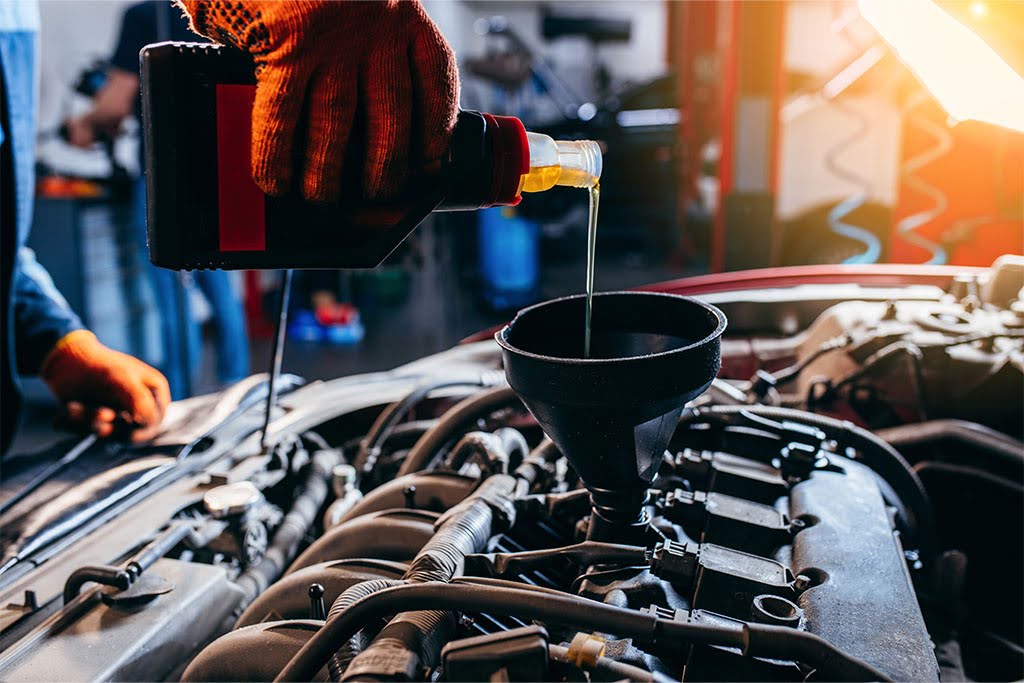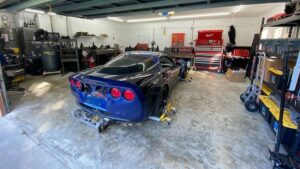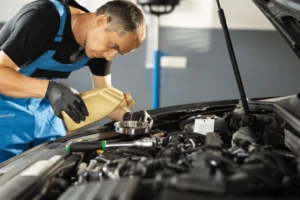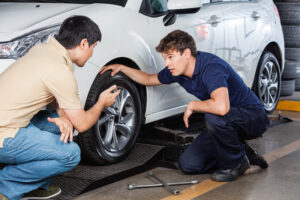Changing the brake pads on your car is one of the most important maintenance jobs you can do to stay safe on the road. Over time, brake pads wear out. If you don’t change them when they’re supposed to be, your brakes may not work as well or even get damaged. It might be scary to think about working on your car’s brakes, but changing brake pads is a pretty easy job that you can do yourself if you have the right tools and some time. You can change your own brake pads by following the steps in this guide.
Why it’s important to change your brake pads
Brake pads are an important part of your car’s stopping system. When you step on the brakes, the brake pads press against the brake wheels. This makes friction, which slows down the car and stops it. The friction material on the brake pads goes away over time, making them less effective. Damage to the rotors, which cost more to repair, can happen if the brake pads get too thin. Changing the brake pads on a daily basis helps keep your braking system in good shape and makes sure your car stops safely.
Things you’ll need
Before you start, get the tools and items you’ll need:
Get new brake pads. The manual for your car will tell you what kind to get.
A lug wrench to take the wheels off
A jack and jack stands to raise the car
A C-clamp or brake piston tool to squeeze the piston in the brake caliper.
A socket wrench to take off the brake bolts
A bungee cord or wire to hang the measure from
Anti-seize or brake grease for the back of the pads
A torque wrench is not required, but it is suggested.
Follow these steps to change your brake pads once you have everything ready.
Get your car ready
Place your car on a flat area and put the parking brake on before you start. Set up wheel chocks behind the back tires to make sure you’re extra safe while you work on the front brake pads. To change the brake pads, loosen the lug nuts on the wheels but don’t take them off completely yet.
Raise the car
Get the car off the ground with a jack. You can find the recommended lifting point for your car in the owner’s manual. Place the jack under that place. After lifting the car, put jack stands under it to keep it in place. Before going any further, make sure the car is safe.
Take the wheel off
The car is now safely raised. Finish removing the lug nuts and remove the wheel. This will let you get to the parts of the brakes. Set the wheel and lug nuts aside to keep them safe.
Find the brake caliper
The brake rotor and brake caliper can be seen once the wheel is off. Inside the caliper are the brake pads, which are pressed against the rotor when you step on the stop pedal. You’ll need to take off the caliper to get to the brake pads.
Take off the brake caliper
Take out the bolts that hold the caliper in place with a socket wrench. Most of the time, the nuts are on the back of the caliper. Carefully slide the caliper off the rotor after taking off the bolts. Avoid letting the caliper hang by the brake line, as this could hurt the hose. Instead, fasten the caliper to the frame with a wire or bungee cord.
Take off the old brake pads
Now that the caliper is out of the way, you can take off the old brake pads. The caliper clamp should make it easy for them to slide out. Make a note of where the old brake pads are placed because that’s how you should put the new ones on.
Look over the Rotors
Check the brake rotors for damage before putting on the new brake pads. The rotors should be fine to use if they are smooth and don’t have any deep holes. In that case, you might need to have the rotors resurfaced or changed if they are worn or broken. You should also check the brakes for any signs of damage or leaks at this point.
Squeeze the caliper piston
In order to make room for the new, bigger brake pads, the next step is to squeeze the caliper piston. Take your time and use a C-clamp or brake piston tool to push the piston back into the caliper. Take it easy so you don’t hurt the piston or brake. You’ll have enough room to put on the new brake pads once the piston is fully squeezed.
Put the new brake pads on
Put some brake grease or anti-seize powder on the back of the new brake pads. This helps keep noise down and makes sure the machine runs smoothly. As you slide the new brake pads into the caliper clamp, make sure they fit correctly and are in the same place as the old ones.
Put the brake caliper back in place
Slowly slide the brake caliper back over the wheel and pads after putting on the new pads. Align the caliper with the frame and then put the bolts back in place. Use your socket wrench to tighten the nuts all the way. If you have a torque wrench, look in the owner’s instructions for your car to find out the right torque levels, then tighten the bolts to those levels.
Put the wheel back on
After making sure the caliper is tight, the wheel can be put back on. Put the wheel on the hub and tighten the lug nuts by hand. Using the jack, lower the car back to the ground. Then, fully tighten the lug nuts in a crossing pattern to make sure the pressure is even.
Make sure the brakes work
You should check the brakes before you drive the car. First, press the stop pedal a few times to make sure the brake pads are in the right place and the pedal feels firm. To begin with, the pedal might feel a little soft. However, after a few pumps, it should feel hard again.
Take your car for a short test drive in a safe place once the brakes feel good. Slowly step on the brakes to make sure everything is working right. If you hear strange noises or have problems with the brakes, either check your work again or get help from an expert.
Conclusion
Changing the brake pads on your car is an important maintenance job that you can do yourself with a little time and work. It will save you money compared to hiring a mechanic to do it, and you’ll feel good about making your car safer. You can keep your car’s brakes in great shape by following these steps. This will give you safe and effective stopping power. Taking care of your brake pads on a regular basis will help you avoid more expensive fixes down the road and keep your car running at its best.




